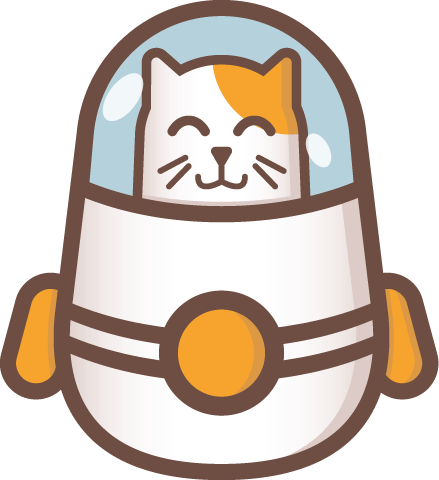# 1. Bootstrap project
First, let's create a new folder in which we will put our server code.
mkdir funpets
cd funpets
# Create the server app
Use the following commands to install the NestJS CLI and create a new server app:
npm install -g @nestjs/cli
nest new funpets-server
cd funpets-server
It will create the base project configuration and install packages. Once it's done, you can test if it's working correctly by running the command:
npm start
It should start the server and print some logs in the console once it's started. Open a new terminal and run this command to check that it's responding:
curl http://localhost:3000
You should see Hello World! in the console if everything works well.
# Add your first endpoint
We can use the NestJS CLI again to create a new controller:
nest generate controller stories
Open the file src/stories/stories.controller.ts and add this pet fun facts list after the imports:
// Some cat facts, courtesy of https://catfact.ninja
const funFacts = [
"Cats have supersonic hearing",
"On average, cats spend 2/3 of every day sleeping. That means a nine-year-old cat has been awake for only three years of its life.",
"A cat uses its whiskers for measuring distances. The whiskers of a cat are capable of registering very small changes in air pressure.",
"A healthy cat has a temperature between 38 and 39 degrees Celcius.",
"A cat’s jaw can’t move sideways, so a cat can’t chew large chunks of food.","Jaguars are the only big cats that don't roar.",
"Cats have 'nine lives' thanks to a flexible spine and powerful leg and back muscles",
"The cat's tail is used to maintain balance.",
"The technical term for a cat’s hairball is a 'bezoar.'",
"The first cat show was organized in 1871 in London. Cat shows later became a worldwide craze.",
"A happy cat holds her tail high and steady.",
"A cat can jump 5 times as high as it is tall."
];
Then add a new method in the existing StoriesController class, like this:
@Controller('stories')
export class StoriesController {
@Get('random')
getRandomStory(): string {
return funFacts[Math.floor(Math.random() * funFacts.length)];
}
}
Finally, add Get to the existing import so we can use this annotation:
import { Controller, Get } from '@nestjs/common';
Now let's break down what we just did:
The
@Controller()annotation specifies that this class will handle incoming requests and return responses to the client. The optional argument'random'used here will be used as the base route prefix for all handlers defined within that class.The
@Get()annotation defines a new HTTP GET request handler, creating a new endpoint. The optional argument'random'will be used as a path for this endpoint.
Combining the controller path prefix with our request handler path, NestJS will create the GET /stories/random HTTP endpoint.
This endpoint will return a status code 200 and the associated response, which in our case is just a string.
Note
You can look at the NestJS controller documentation for the list of all annotations and options that can be used to define endpoints.
# Add a global API prefix
A common good practice is to define a global path prefix for all your endpoints, making it easy to later version your API or expose it alongside static assets.
You can do this in NestJS by editing the src/main.ts and call the setGlobalPrefix() method after the app creation:
const app = await NestFactory.create(AppModule);
app.setGlobalPrefix('api');
After this change, our HTTP endpoint will be GET /api/stories/random.
# Run the server
Our server is now ready for local testing, start it with the command:
npm start
After the server is started, you can test if our API is responding correctly using curl:
curl http://localhost:3000/api/stories/random
You should see a random cat fact in the console each time you invoke this command. You now have a working API! 🎉
Ok, this was just the warmup to get a hand of the NestJS API, now let's deploy what we just built before moving on to more serious stuff 💪.
Solution: see the code for step 1
